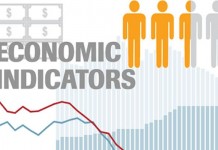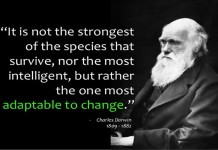It’s almost a cliché now, how most brokers sell the simplicity of binary options to prospective clients. They toss jargon like “fundamental analysis”, “events trading”, “economic calendars” and “NFP” at you, making it seem like trading is as simple checking the calendar for an important release, clicking Call if it comes in better than forecast, and clicking Put if it comes in red.
Firstly, following an economic calendar and trading on events should NOT be confused with fundamental analysis (if only fundamental analysis were that easy!). Fundamental analysis is all the rest of the market research you conduct, all the reading you do every day that gives you context and a clearer picture whenever a piece of economic data comes in. Fundamental analysis is just about the biggest project anyone could ever get involved in, it is EVERYTHING. All countries, all economies, all geopolitics, all news.
That said. You can still trade events without having an encyclopaedic knowledge of the world’s markets. But again, if you think it’s as simple as Calling a good repot and Putting a bad report your begging to lose your balance. Think about it, if it were that easy don’t you think everybody on the planet earth would be doing it?
What follows is the simplest example from a real life situation that will help you understand that all is not what it seems at first glance, that this is not a get rich quick thing, and that you’re actually going to have to put some work in if you’re going to get good at trading binary options.
Last Friday as expected some very important employment data came in from North America. Canadian employment change and US Non-Farm Payroll data were both released at the same time, and were both extremely positive, beating all forecasts. 180,000 new jobs were predicted for the US economy, the reported NFP figures came in at 203,000. In Canada the situation was even more impressive; the market was expecting a decline from 13,200 to 12,300; the actual figures showed a massive increase of 21,600 new jobs, almost twice that of the previous report.
The following are two screenshots from price action on USD/CAD, and EUR/CAD respectively, showing exactly what took place as the data came in.

Now, the gains made in employment were much more pronounced in Canada than they were in the US. The US was shown to have only created 3000 new jobs as compared to Canada’s creation of 8400 new jobs.
Now look at the charts again, in the first instance USD shoots up, instead of CAD. In the second case EUR, after a momentary plummet, spikes well above the level it was at before the data release (for you binary options newbies out there this means CAD actually went down in both cases).
So what gives? You’re always told that if it comes in better than forecast, especially if it’s significantly better than forecast, that it’s a recipe for some bullish action and some in-the-money CALL trades. Not so on Friday.
If you had gone in with that kind of simplistic logic then you’d have bet big and lost big. Allow me to explain in a few simple points why CAD didn’t react the way you may have been expecting it to:
- Firstly the US data is always bound to take precedence, and the fact that US data also came in very positive leads me to believe that CAD performed weaker due to the market anticipating an end to QE in the US, and so rallied around this high impact economic report, instead of the Canadian one.
- Now that’s the simplest interpretation. When you actually look at the data, while employment was up in Canada, the actual amount of hours worked went down by 0.2 percent.
- Also, the jobs created in Canada have mostly been in the private sector. The government has been axing public sector jobs like there’s no tomorrow (drop of 1.2%). Also self-employment accounts for a sizable amount for the new jobs created, which has led investors to further question the quality of Canada’s labour market.
- Jobs for young people are also falling in Canada, and more employers are opting to hire individuals on a part-time or interim basis. More evidence that the stats look much better than they actually are for the economy.
As you can see, the reality when you look a little closer is quite different than the one you think you see when your research only goes as deep as the stats on your economic calendar.
The things I have just explained to you were factored in by the market, which had the jump on you, and your lack of research, your shoddy grasp of fundamental analysis, would’ve led you to making an erroneous choice just when you thought you had a sure bet on you hand. THIS is why fundamental analysis, REAL FUNDAMENTAL ANALYSIS, is so important. It provides you with much more resolution and gives you a far clearer insight into the collective mind of all traders on your market.
Do your research, know the underlying trends and the situation on the ground, at least as it relates to a couple of your most traded assets, then and only then go in. That’s what makes the difference between a binary trader, and someone who goes in blind.















